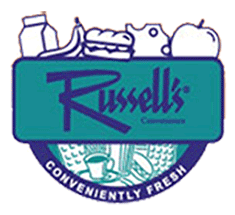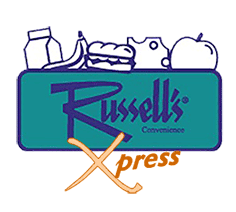Demand for energy drinks continues to push sales upward, making the category a star performer
By Howard Riell, Associate Editor
Energy drink sales are up, even as larger, more established, mass-market categories like carbonated soft drinks and fruit beverages have dipped. For convenience store operators, the message couldn’t be clearer.“Energy drinks experienced solid volume growth in 2014, up 6.4%,” said Gary Hemphill, managing director of research for Beverage Marketing Corp. (BMC) “C-stores are by far the largest channel for energy drink sales because so many purchases are impulse driven. Over half of energy drink sales today are through convenience stores.”
In fact, BMC’s research indicated that only ready-to-drink coffee at 10.7%, and bottled water at 7.3%, grew volume at a faster rate from 2013 to 2014.
To date, Red Bull and Monster lead the category with Rockstar the third most successful brand, BMC has found. That’s been the order for some time.
“Red Bull created the category, and Monster followed closely afterwards,” Hemphill said. “The leading brands are well recognized by consumers, and deliver on their promise of an energy boost. They all have very strong distribution, which has helped to boost their sales.”
That upward momentum should continue, Hemphill added. “We’re anticipating growth in the range of 6-8% for 2015 based on first quarter performance.”
Wells Fargo Securities LLC, recently conducted a survey of beverage retailers representing tens of thousands of convenience store locations across the country for the past Memorial Day holiday, which kicks off the peak beverage-selling season. According to Managing Director for Beverage, Tobacco & Convenience Store Research Bonnie Herzog, retailers’ overall energy sales for 2015 are up by 11.2%, better than the 10.6% first projected in the firm’s February industry survey.
Herzog noted that Red Bull is gaining dollar share from Monster driven by successful innovation and higher prices, which she said begs the question of whether Red Bull’s price increases might become more regular.
“With Monster expected to take prices up in Q3 and retailers reporting that ‘Monster has new innovation coming in the fourth quarter of 2015,’ we expect Monster’s second-half results should improve,” Herzog said.
SIZING UP POTENTIAL
“Our energy drink sales are about 2-3% up, and our energy shots are flat,” reported Bill Welch, general manager for Retail Alliance LLC of Vacaville, Calif., which does business as Wood Oil LLC. “There are more flavors and size choices for the energy drinks. The bulk of our energy sales is always with the drinks over shots.”
There’s potential in the energy space, given new flavors and size choices, especially in Red Bull, according to Welch.
“Red Bull is our top seller, followed by Rockstar and then Monster. Red Bull has the least amount of different flavor choices, which allows them potential growth if they can find a good flavor,” Welch said.
Welch’s stores usually have one door in the main cooler devoted to energy, with two additional coolers out on the sales floor. Energy sales average $5,000 to $6,000 per month in all but one of his stores, he added. “Customers tend to get behind any two-for-this-price deals that we carry.”
Innovation in the marketplace, followed by innovated marketing is helping driving sales.
“As for the energy category, what I find that drives it are the flavor innovation and promotions,” said Vicki Jackson, marketing manager for Lakewood, Colo.-based HJB Convenience Corp., which operates Russell’s Convenience Stores. “Energy continues to be a strong category. I believe you need to keep your eyes on what is selling, look at innovation and promote.”
Russell’s Convenience Stores average one door of energy, while the chain’s largest vault footprint has 10 doors, giving the c-store plenty of space to adjust its product mix if needed.
“I see (the category) possibly expanding since Coke took over Monster,” Jackson said. “We do not sell beer, so Monster only had 3-4 facings when it was with Anheuser-Busch. Our cooler sets were already complete by the time Coke got Monster, so we have only expanded one or two facings.”
The promotions that continue to do well for her stores are the two-fers, she added.
As for energy shots, Jackson said, the story in Russell’s stores is the same as in others. “In our stores if it isn’t 5-hour then it doesn’t sell. Even with that, we have seen a minor decline in sales of shots.”
BRAND POWER
Steve Anabi, director of purchasing for family-owned and operated Anabi Oil of Upland, Calif., helps oversee company-operated convenience stores in northern and southern California and Alaska. Referring to energy, Anabi said the sky is the limit for this category.
Anabi Oil, which began in 1991 with a single station in Baldwin Park, Calif., is one of the largest Shell branded fuel distributors in California, owning and operating over 220 locations and delivering to an additional 120.
The purchasing director urges colleagues not to waste their money or limited shelf space on me-too products that seem to be multiplying within the category.
“There are a lot of companies out there that are trying to sell you energy drinks. They call you every day. Every day!” Anabi said. “Well, if you want to give away your money I’ll give you the name of a charity, just write a check and send it to them.”
Often, customer loyalty to the top-selling brands is too strong for lesser-known competitors to overcome without some kind of stellar promotion.
“Consumers only want the big names,” Anabi said. “Even if you sit in the parking lot and give samples, if you give away free product and watch 10 customers come in, when they come out of the store of 10 customers only one will come out with that product.”
Anabi identifies Americans’ perceived need for energy around the clock rather than in-store promotions for the category’s continued popularity.
“Right now at our busiest store, you can come sit down on a chair and watch as 10 customers come in from 7 a.m. to 8 a.m.,” Anabi said. “Seven will buy energy drinks.”
Thus, advertising in Anabi stores will always focus squarely on energy drinks, he insisted.
“From the pumps all the way to the window will be energy drinks,” Anabi said. “Everybody knows that we sell beer and we sell cigarettes. That’s a given. That’s C-Store 101 from 10 years ago, 20 years ago, 30 years ago. But you want to tell the customer, ‘Hey, everybody in this town has energy drinks, but I’m two for $3.33 or $3.50 or $3.75.’”
Recently, Anabi stores have begun a bundling program with energy drinks, a tactic he said more retailers will begin to adopt. “You’re going to start seeing ‘Buy a car wash get a Monster or Buy a bag of chips, get a Monster for 99 cents,’” That’s the next vision of the marketing. We started doing it a little bit—buy two Monsters get 10 cents off a gallon of gas.”
Hemphill suggested that c-stores have great potential for further growth, but so do other channels since many are under-developed compared to c-stores. Product innovation in the form of both flavor and packaging continues to spur growth.
“Energy is going to be here for a long time,” Anabi concluded. “It’s like a drug. People are addicted to it already. It’s not going to go away. It’s just like tobacco and Hot Cheetos.”

